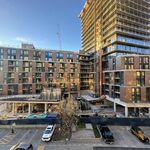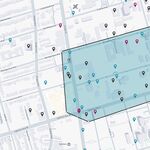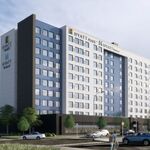do you write for NOW mag? This one is about corktown in general but the heart of it is the Corktown District buildings. Pretty one sided.
http://www.nowtoronto.com/news/story.cfm?content=162425
Popping Corktown
The last of T.O.’s untouched historic ’hoods is under siege.
Enzo Di Matteo
Abandoned as an industrial wasteland, the area where King meets Queen is all of a sudden hip, thanks to specialty shops and the souls who stayed and painstakingly reclaimed properties.
The city’s desire to connect people to the waterfront and the Distillery District has opened the long-forgotten stretch to runaway condo development, but the last thing residents want is to see this Victorian-era enclave overwhelmed by glass boxes.
Where it all began for Corktown – the grocery store and lumber yard at the southwest corner of Berkeley and King.
What makes Corktown cool
• Turn-of-the-19th-century industrial architecture; one-way streets and curving lanes; cottages.
Corktown’s big-buck appeal: penthouses for $1.7 million at Parliament and King
The city’s dilemma
• Planning department is eager to see long-ignored industrial plots redeveloped; King Street is ripe for intensification; planners are keen on cutting developers some slack, but the projects being pitched are more than twice the allowable height limit.
Richmond off ramp sparked King East exodus, but the real estate rush is now on.
• The city has asked Streetcar Developments Inc., the developer of four of the projects (510, 549, 569 King and 52 Sumach), to make refinements. (Residents note dozens of zoning bylaw infractions.) Streetcar has responded by taking its case to the OMB over delays.
Sticking points for residents
• Building setbacks. Parking. Visual appeal.
• Three of the proposed buildings on King East are less than 30 metres from each other.
•Light studies were done on the longest day of the year, not during the 10 months when projects will have their greatest shadow impact on neighbouring houses.
Tower tacked onto Robert Davies’s Dominion Brewery was thankfully the only gaudy miscue in 1990s reno
The bigger threat
• The West Don Lands behemoth touching Corktown’s eastern flank. Can full-fledged towers like the Distillery District’s twin 32-storey numbers be far off?
Properties for sale
Shadows of proposed condos and office buildings may fall on Victorian-era cottages on Bright and old firehall on Berkeley.
• Two-storey commercial bulding at 135 Berkeley.
• Three-storey commercial at 487 King East.
Recently sold
• 443 and 445 King East, reportedly for upwards of $1 million.
In the works
• Fourteen-storey condo with penthouses at 333 King East.
• Eight-storey, 185-unit condo at 510-512 King East.
• Six-storey, 42-unit condo with commercial space on ground floor at 569 King East.
• Six-storey residential, 44 units, with four townhouses at 549 King East.
• Five-storey, 44-unit condo at 52 Sumach.
• Dedicated streetcar lane down Sumach to the Distillery District.




